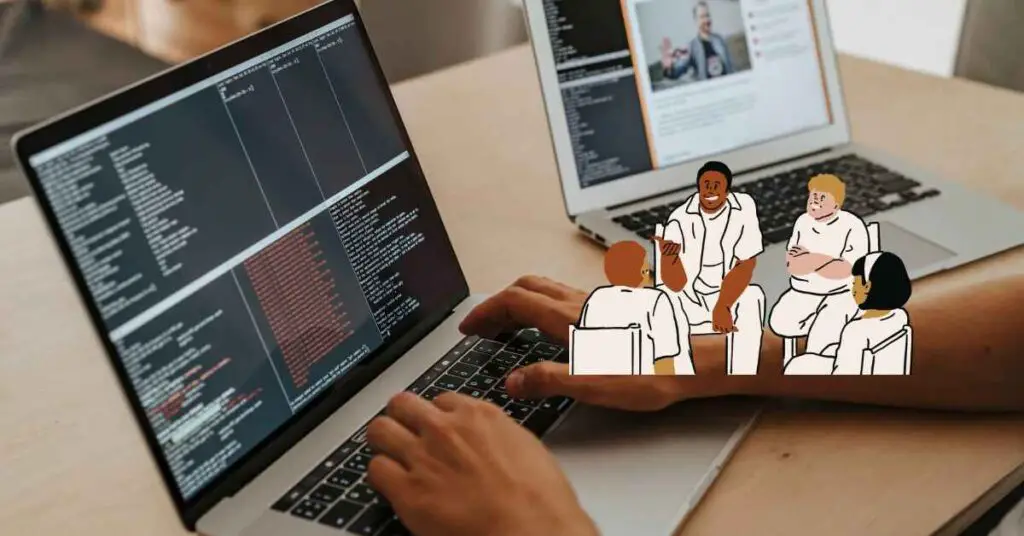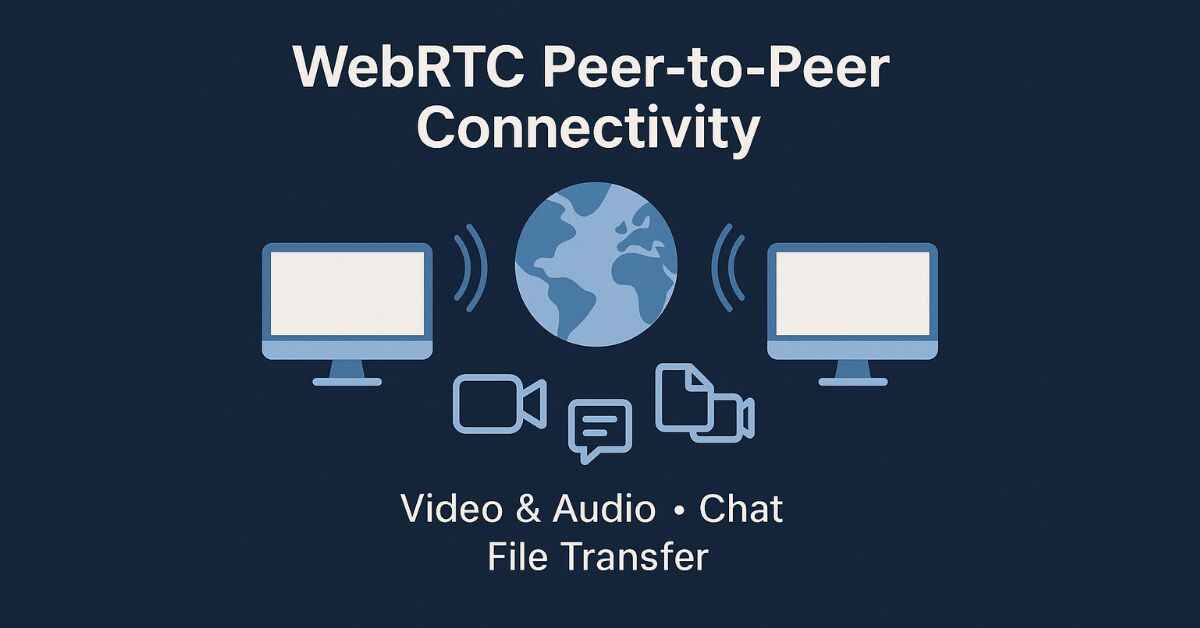|
Getting your Trinity Audio player ready... |
Originally published on Makemychance.com
Have you ever used a video call, online chat, or screen-sharing tool — all without installing any software? That’s probably WebRTC in action.
WebRTC (Web Real-Time Communication) is a powerful browser-based technology that enables peer-to-peer communication using audio, video, or data — directly between two devices. And the best part? No plugins, no downloads — just JavaScript and your browser.
In this article, we’ll break down how WebRTC works, what makes it so powerful, and how to implement peer-to-peer connectivity step-by-step.

🌐 What is WebRTC?
WebRTC is an open-source project that allows real-time communication (RTC) directly between browsers and devices. It’s widely supported across major browsers like Chrome, Firefox, Edge, and Safari.
WebRTC enables:
- 📹 Video & audio calls
- 🗂️ File and data transfer
- 🖥️ Screen sharing
- 🛠️ Low-latency apps like gaming and remote control
🔄 Peer-to-Peer Communication in WebRTC
At the core of WebRTC is peer-to-peer (P2P) communication, which means that once two clients are connected, the data flows directly between them — without going through a server (except for the initial handshake).
🔧 Components of WebRTC:
- RTCPeerConnection – Handles the actual peer-to-peer connection
- RTCDataChannel – Sends arbitrary data (like chat messages or files)
- MediaStream (getUserMedia) – Captures audio/video from camera or mic
🛠️ WebRTC Peer-to-Peer Example (Basic Setup)
Step 1: Get User Media
navigator.mediaDevices.getUserMedia({ video: true, audio: true })
.then(stream => {
document.getElementById('localVideo').srcObject = stream;
})
.catch(err => console.error('Error accessing media:', err));
Step 2: Create Peer Connection
const peerConnection = new RTCPeerConnection();
stream.getTracks().forEach(track => peerConnection.addTrack(track, stream));
Step 3: Exchange Offers and Answers
You’ll need a signaling server (WebSocket, socket.io, etc.) to exchange the offer/answer and ICE candidates.
peerConnection.createOffer()
.then(offer => {
peerConnection.setLocalDescription(offer);
sendToServer('offer', offer); // custom signaling method
});
Step 4: Add ICE Candidates
peerConnection.onicecandidate = event => {
if (event.candidate) {
sendToServer('ice-candidate', event.candidate);
}
};
Once both peers exchange offers/answers and ICE candidates, the connection is established.
📡 What About Signaling?
Signaling is not part of WebRTC — it’s the method used to connect users initially and exchange connection data.
Use any tech like:
- WebSockets
- Socket.IO
- Firebase Realtime DB
Once signaling is complete, WebRTC takes over the communication.
💬 WebRTC Data Channels (For Chat, File Transfer)
const dataChannel = peerConnection.createDataChannel("chat");
dataChannel.onopen = () => {
dataChannel.send("Hello Peer!");
};
dataChannel.onmessage = (event) => {
console.log("Received:", event.data);
};
🌍 Real-World Use Cases
- Video Conferencing (Google Meet, Zoom)
- Live Streaming
- Online Gaming (P2P Multiplayer)
- IoT Device Communication
- Remote Desktop/Screen Sharing
🧪 Important Notes
- Requires HTTPS (except localhost)
- Needs a TURN server fallback if direct P2P is blocked by NAT/firewall
- Browser compatibility is high but not 100% feature-equivalent
✅ Conclusion
WebRTC empowers developers to build fast, lightweight, real-time communication tools right in the browser. Its peer-to-peer architecture reduces latency, eliminates server load (after connection), and makes it ideal for modern web apps.
With just a few lines of JavaScript and a signaling mechanism, you can connect users directly — whether it’s for a quick video call, a multiplayer game, or real-time collaboration.
🔗 Want to go deeper?
Check out the official WebRTC documentation or explore open-source libraries like:
Java Socket Programming Basics
Arsalan Malik is a passionate Software Engineer and the Founder of Makemychance.com. A proud CDAC-qualified developer, Arsalan specializes in full-stack web development, with expertise in technologies like Node.js, PHP, WordPress, React, and modern CSS frameworks.
He actively shares his knowledge and insights with the developer community on platforms like Dev.to and engages with professionals worldwide through LinkedIn.
Arsalan believes in building real-world projects that not only solve problems but also educate and empower users. His mission is to make technology simple, accessible, and impactful for everyone.



